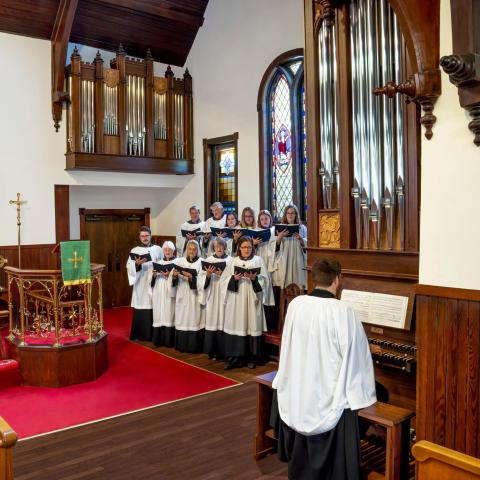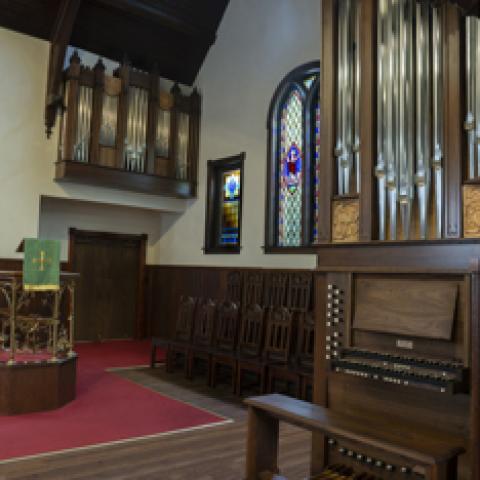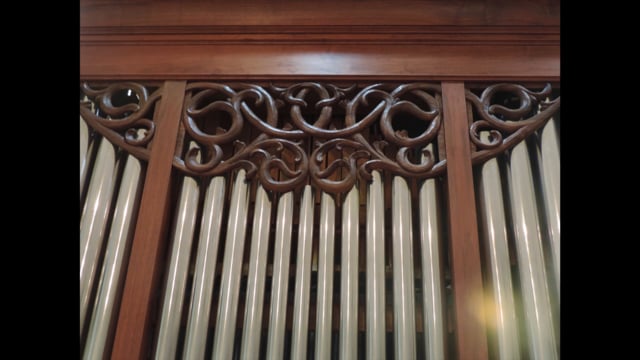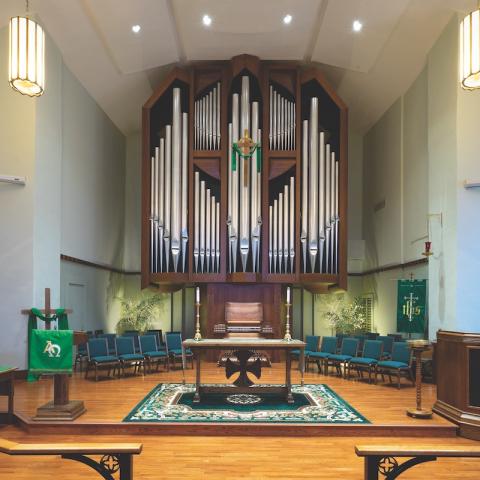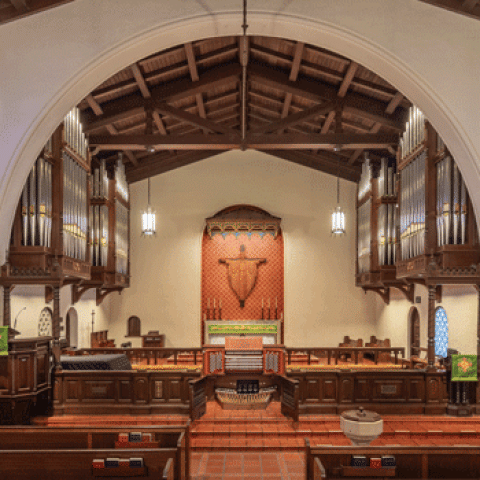
The dedication recital of M. P. Rathke, Inc., Opus 12 at Grace Episcopal Church in Carthage, Missouri, will be presented by organist/choirmaster Peter Frost on October 9 at 3:00 p.m. The entire instrument is housed in a pair of oak cases located on opposite sides of a shallow transept.
Manual pipework plus the full-length Pedal 16′ Trombone is contained in a freestanding main case with an attached console, entirely under expression apart from front pipes 1–11 of the Swell 8′ Dulciana. This pipework is controlled via direct mechanical key action, with electric stop action. The keydesk is located on the narrow end of the case, rather than the more conventional placement centered on the case front, the former allowing for better sight lines for conducting from the console.
Pedal fluework is housed in a shallow chamber opposite the manual case and comprises a 16′–8′ Subbass unit and an 8′–4′ Principal unit, both of which play from conventional electro-pneumatic unit chests. The bottom 24 notes of the Great 16′ Bourdon are located beneath the choir risers.
This organ will be featured on the cover of the December 2022 issue of The Diapason.
For further information: www.rathkepipeorgans.com.
Other organ builder news:

